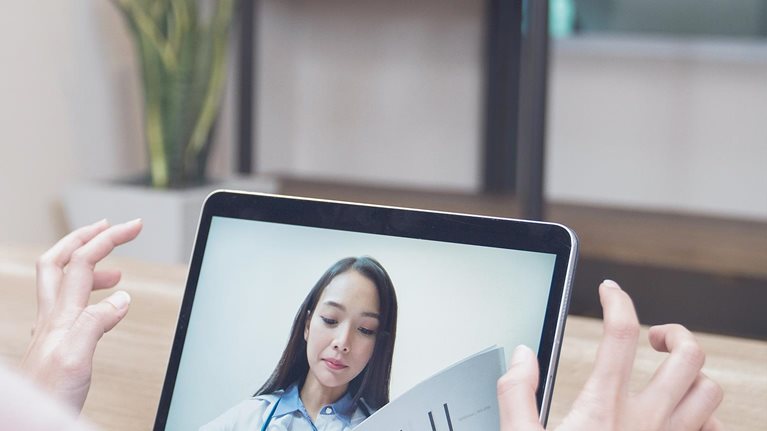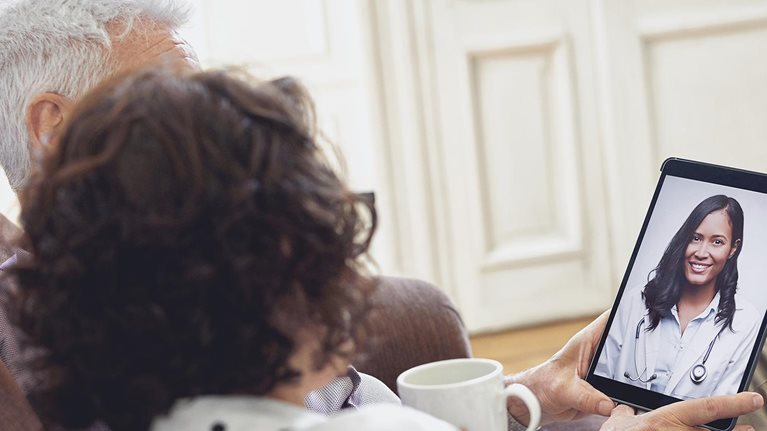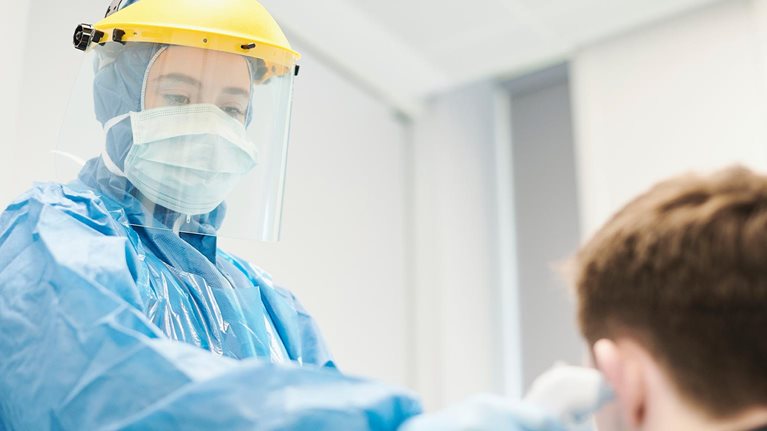CVS Caremark, the pharmacy-benefits management arm of CVS Health, supplies nearly one in three Americans with prescription medicines. The company also works with CVS Health’s network of nurses and walk-in clinics to deliver healthcare services to patients nationwide.
As a result, CVS Caremark president Alan Lotvin has a unique vantage point from which to survey the US healthcare system. In this edited interview with McKinsey’s BJ Tevelow, Lotvin discusses his company’s efforts to serve patients during the COVID-19 pandemic and describes opportunities to strengthen healthcare, including a shift to in-home models.
McKinsey: How did CVS Caremark prepare for the initial wave of the coronavirus pandemic?
Alan Lotvin: We could see it starting. Even before it was defined as a pandemic, we had already started to expand our hours and clear out work that was in process in the pharmacies to ensure that we had less work going on, fewer prescriptions, and fewer people in our facilities [for safety reasons].
Once the pandemic hit, we worked with local agencies to change some regulations to enable things that previously had to happen inside a pharmacy to be done remotely. That has allowed us to maintain operations within all of our specialty and traditional health-service pharmacies.
On the retail side, we focused on how we could keep all the stores operating, how to change the physical environment to make it safe, and how to minimize the number of trips people need to make into the pharmacy. We opened up early refills. We opened up 90-day fills and reminded people they had 90-day benefits. We created free delivery from the retail stores. Everything focused on how to help people get their medications without having to have them come into a fixed setting.
We also carefully monitored changes in demand for certain medicines. That helped us ensure that we had adequate supplies for people who depended on those drugs to manage their diseases.
McKinsey: How do you think the COVID-19 outbreak will progress? What are you doing to get ready?
Alan Lotvin: We’re already seeing increases in COVID-19 cases around the country. I expect a resurgence in the fall, and we’re planning for that.
We’ve thought a lot about what the flu season in 2020 is going to look like. Now, for every person who comes in with flu-like symptoms, the presumption is going to be that they could have COVID-19, in addition to the standard seasonal flu. So how does that change our testing protocols? How does that change our personal-protective-equipment protocols. How does that change how we take care of patients?
We need to build up supplies for people like our nurses, who are inevitably going to interact with very sick people. And we need to put processes in place that allow us to minimize the number of people who need to be in our large facilities at any one time.
McKinsey: We’ve certainly seen the need for healthcare exceed capacity in many places during the pandemic. What changes could help lessen the strain on the healthcare system?
Alan Lotvin: Well, when you run any system at the line of perfect efficiency, and you have no slack in the system for demand that’s not predictable, it’s a problem. Flattening the curve was all driven by, “How do I make sure that I don’t overwhelm my ICU capability?” So I think we’ve learned that we need to do something differently about capacity. I’m not saying we need to build more hospitals. We need to think about more flexible approaches.
McKinsey: What might those approaches involve?
Alan Lotvin: I’ll paint a picture that doesn’t exist right now, but could. You show up in an emergency room mildly short of breath, coughing, febrile. And you’re diagnosed with pneumonia in one lobe of your lungs. So you’re probably at low risk of rapid deterioration. But you probably would have gotten admitted if you had any risk factors, just for observation and IV antibiotics.
Well, I can imagine a scenario where we divert you directly to your home. An infusion nurse shows up for your IV antibiotics within a couple hours. He or she brings a small box with a pulse oximeter to measure the oxygen saturation in your blood and your respiratory rate. It might also have a blood-pressure cuff connected. We could monitor everything remotely. That may sound like science fiction, but people monitor ICU patients remotely now.
Sometimes, as a doctor, you just have to examine a patient. Sometimes you need a reading or you need a blood test. But having a distributed infrastructure so you can interact with a patient, on top of remote monitoring and remote care, creates a whole different way of delivering healthcare.
McKinsey: How else might healthcare providers improve outcomes for patients and lessen the strain on hospitals?
Alan Lotvin: One of the hardest problems is preventing avoidable emergency-room visits. There are a lot of conditions for which people go to emergency rooms, even when they don’t really don’t need to. Think about stomach aches, nausea, vomiting.
We’ve done some work to use predictive analytics to help people understand their risk of making an avoidable trip to an emergency room in the next 90 days. And then we deliver messages to them to help them understand where else they could go for care, whether that’s to their doctor or to an urgent-care facility. We’ve been able to reduce those avoidable ER trips by 15 percent in the pilots we’ve done, applying new technologies and connecting patients with the right healthcare infrastructure.
Obviously, telehealth and telemedicine are huge right now. I think those will continue to grow. I think most doctors have found that they are effective ways to run big parts of their practice.
McKinsey: You’re not worried that people might choose not to go to the emergency room when they really should?
Alan Lotvin: That does worry me. We’ve seen a tremendous drop-off in hospital utilization, and not just for elective procedures. So you have to ask: Where have all the heart attacks gone? Where have all the chest-pain admissions gone? I think people are having chest pain and saying, “I’m not going to the hospital.” Chest pain is not something that I want people to think about, on their own, at home. But it seems that with COVID-19, people are making these decisions.
The question I think we’ll need to ask is: What does it mean to have a healthcare institution? Why do we need to aggregate high-risk people in one place, where they’re likely to get infected? I suspect that if we can move more care out of traditional settings into alternative sites, including homes, there’s going to be a real increase in people’s willingness to be in hospitals.
McKinsey: What other shortcomings of the healthcare system has COVID-19 highlighted?
Alan Lotvin: Obviously, we’re sitting here at a point in time where we’re not just dealing with COVID-19 in this country. We’re dealing with a tremendous amount of social unrest following the murder of George Floyd. This epidemic is just another example of how our society has failed black and brown Americans. The disproportionate impact it’s had on them, on underserved communities, and on people with preexisting conditions has really laid bare the disparity in access to healthcare across this country.
We need to address that. We need to get better at the management of chronic disease. We need to be better at managing food security. Because all of the risk factors that we talk about as things we want to work on? They affect the groups that are dying of COVID-19 at the highest rates.
McKinsey: As you think about those issues and the likelihood that there will be a resurgence of the COVID-19 outbreak, what gives you hope?
Alan Lotvin: First of all, I think we’ll have a vaccine in record time. I’m not going to predict when, but if you think about the fastest vaccine ever, it took four or five years. We will beat that by a lot this time. I also think we’ll work through issues related to testing and tracing and quarantine, and adapt those to our own norms in the United States.
I’m also hopeful that the disparities in healthcare access and outcomes that we’ve seen across the country will be addressed, both as part of the response to COVID-19 and as part of the very rapid evolution we’re seeing in our society.
Most of these problems are not issues of science or technology. The technologies exist to make major strides. They’re problems of policy and culture. To solve them, we really have to invest in delivering technologies more broadly. But it feels like we’re at a moment where real change is possible.
Comments and opinions expressed by interviewees are their own and do not represent or reflect opinion, policy, position, or endorsement of/by McKinsey & Company.


